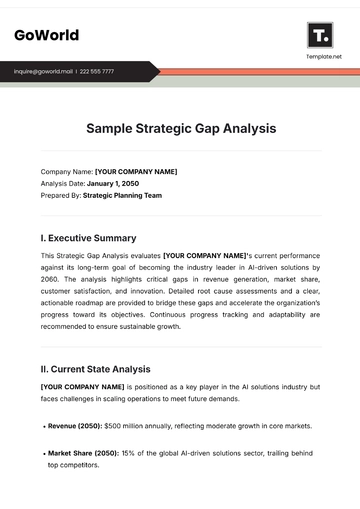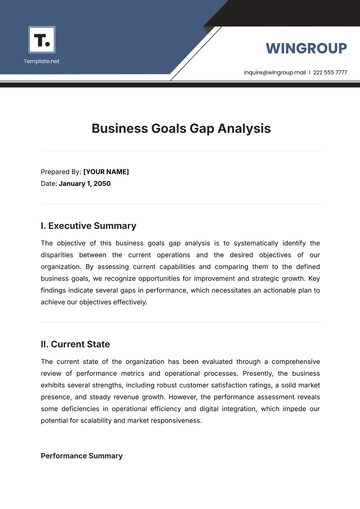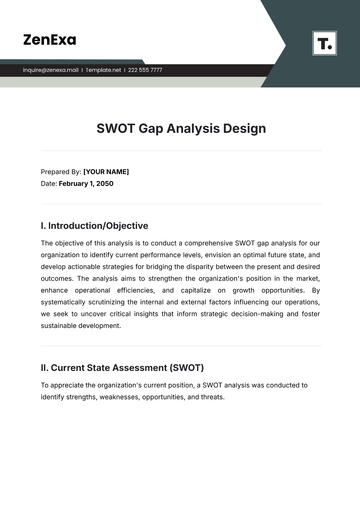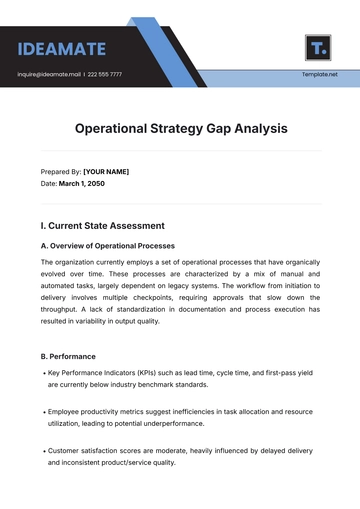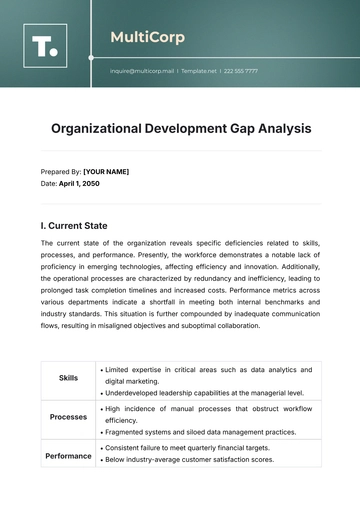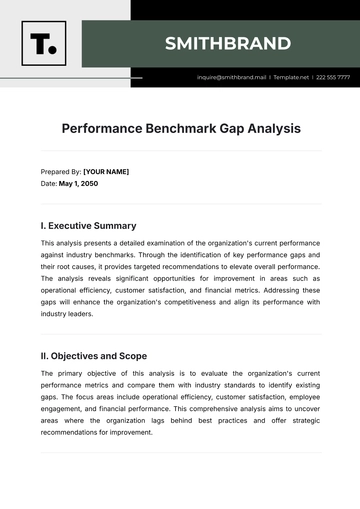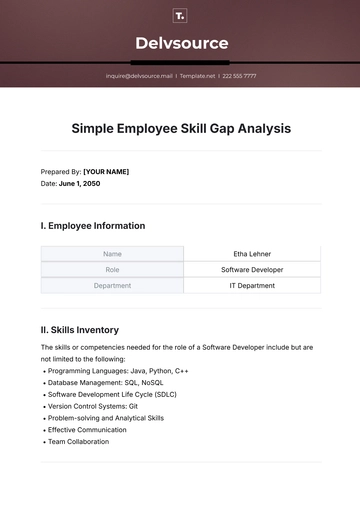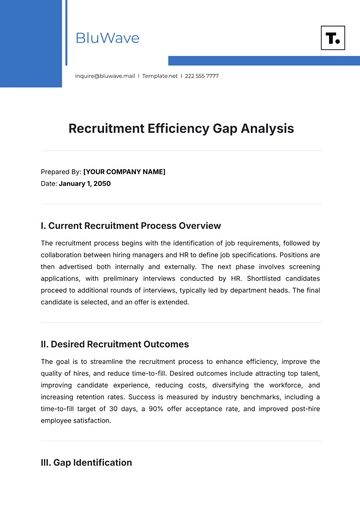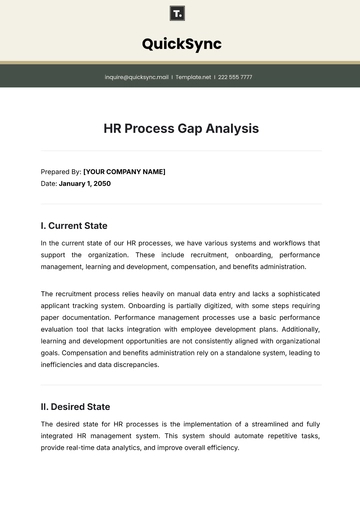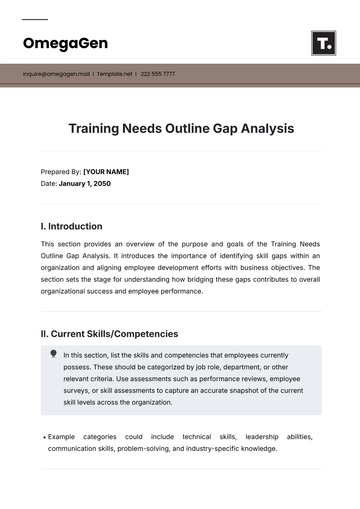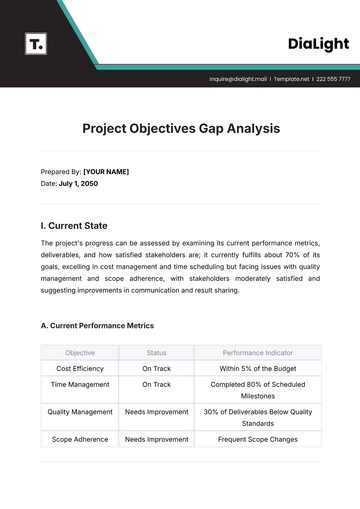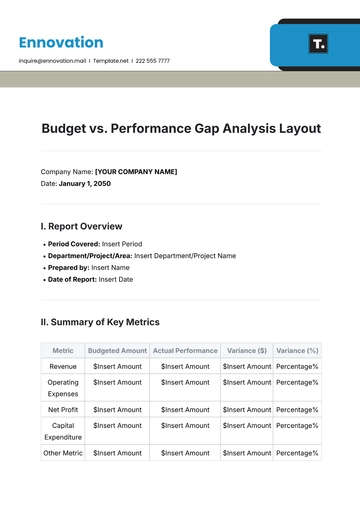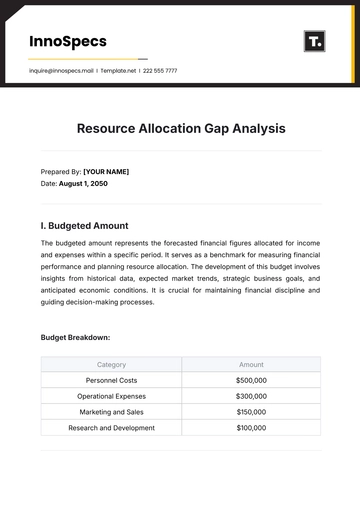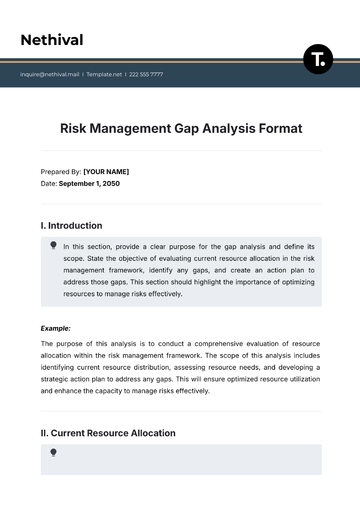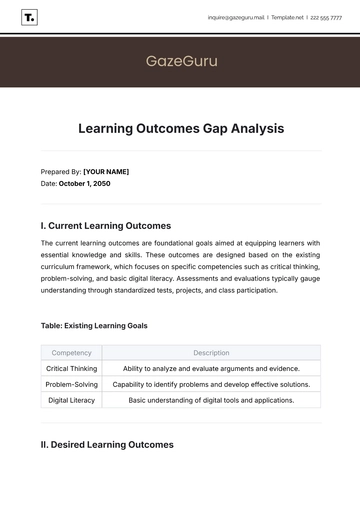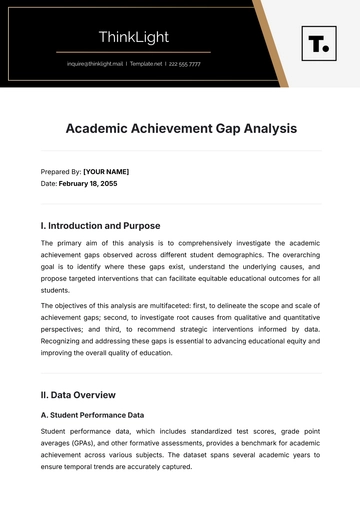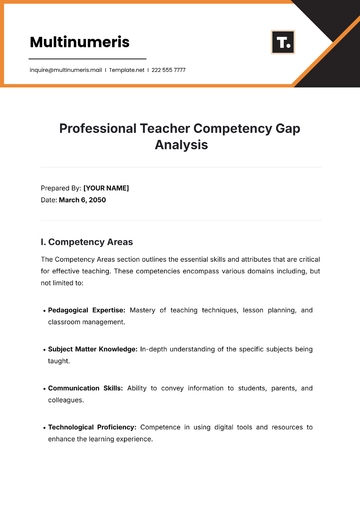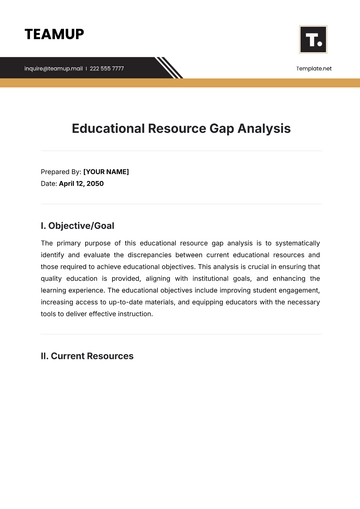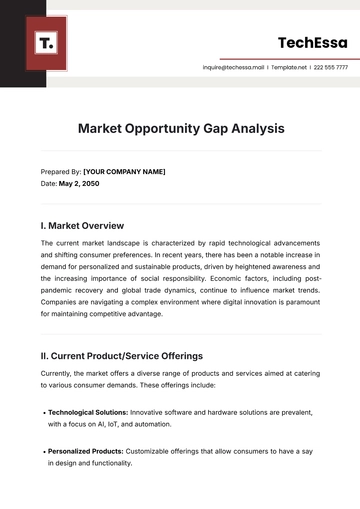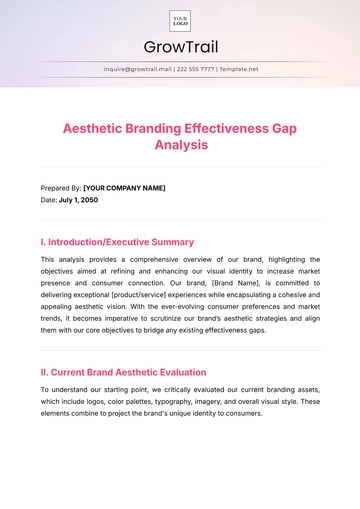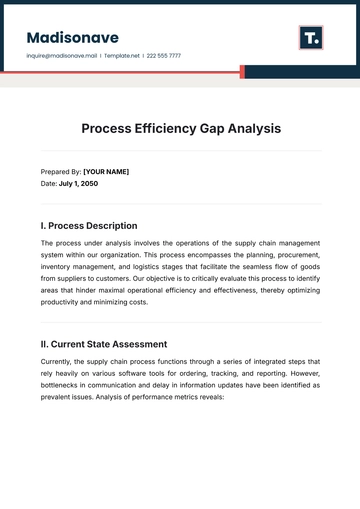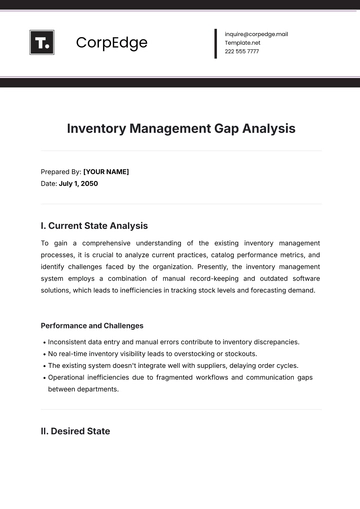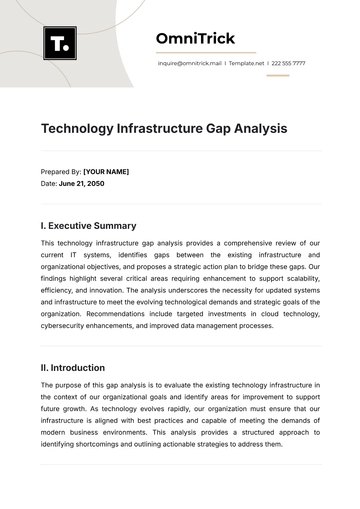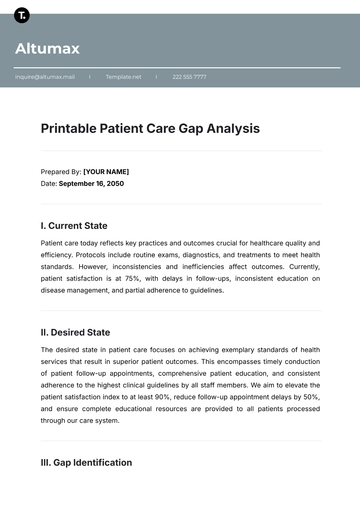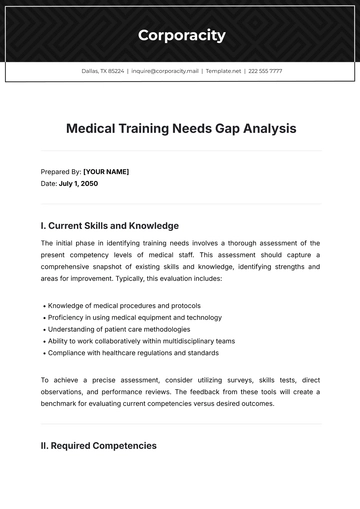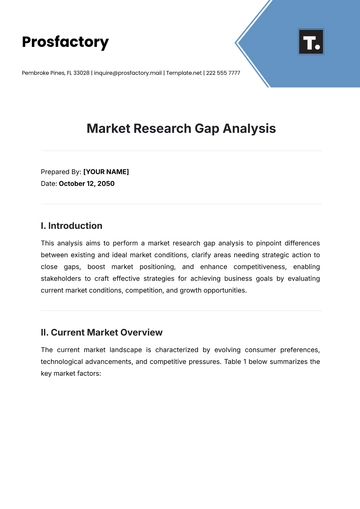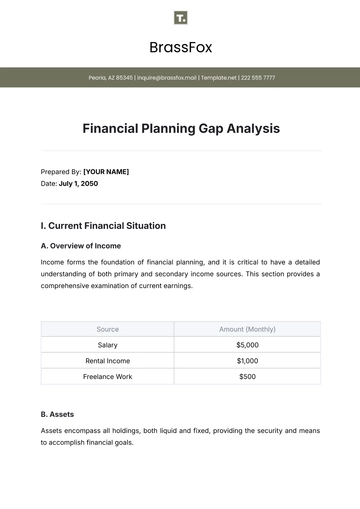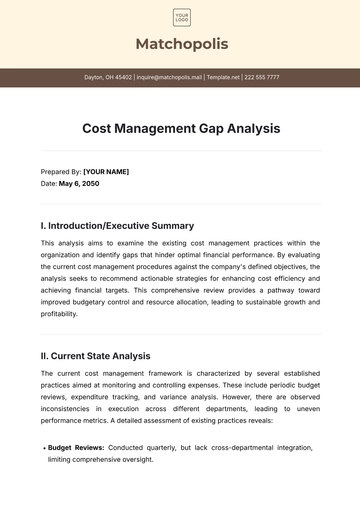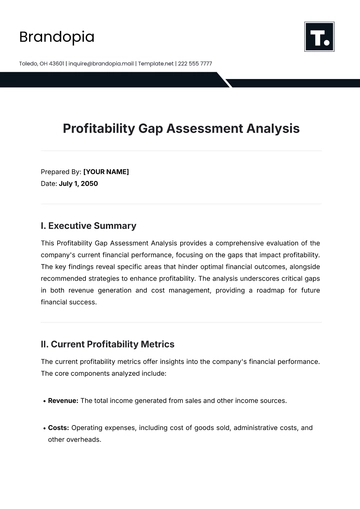Free Car Rental Requirement Analysis
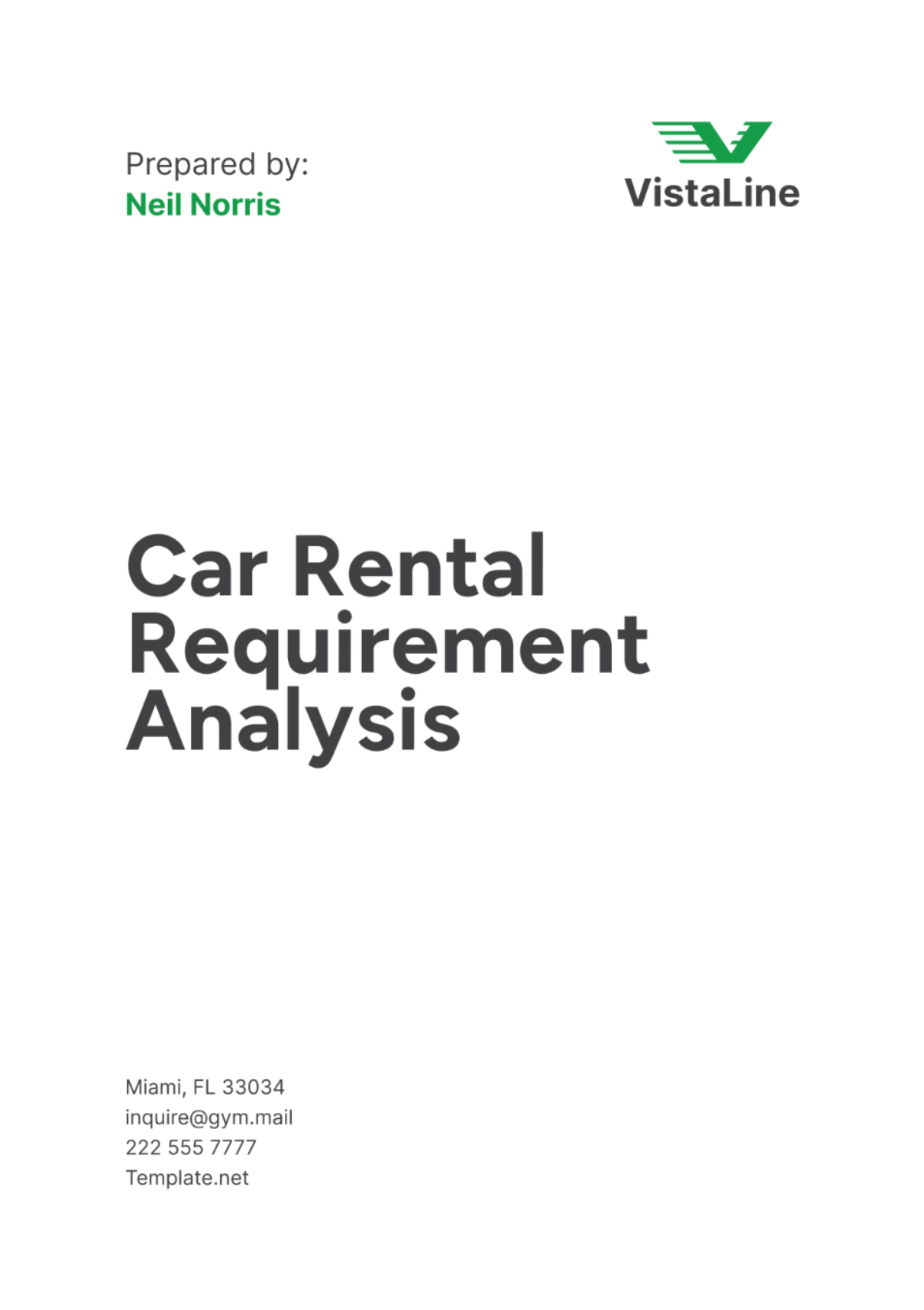
I. Executive Summary
A. Introduction
This Car Rental Requirement Analysis aims to provide a comprehensive evaluation of the requirements needed to establish and operate a successful car rental business. It encompasses market research, fleet management, pricing strategy, location analysis, legal compliance, technology needs, customer service, marketing, financial analysis, risk management, and an implementation plan. This analysis will guide strategic decisions to optimize operations, meet customer needs, and ensure sustainable growth.
B. Objectives of the Analysis
To identify key market opportunities and customer needs. To establish a cost-effective and efficient fleet management strategy. To develop competitive pricing models that maximize profitability while remaining attractive to customers.
C. Summary of Findings
The market demand for car rentals is growing, particularly in urban areas and tourist destinations. A diversified fleet is necessary to meet varied customer preferences. Competitive pricing and robust marketing strategies are essential for market penetration, while legal compliance and insurance are critical for risk management.
D. Recommendations
Acquire a mixed fleet of economy, mid-size, and luxury vehicles to cater to diverse customer needs. Implement a dynamic pricing model to adjust rates based on demand and market conditions. Establish rental locations in high-traffic areas such as airports and city centers to maximize visibility and accessibility.
II. Market Research
A. Target Market Identification
Primary target markets include business travelers, tourists, and local residents needing temporary transportation. Business travelers require reliable and comfortable vehicles for professional engagements. Tourists often seek affordable and convenient transportation options for sightseeing and leisure activities.
B. Customer Demographics and Preferences
Business travelers typically prefer mid-size or full-size sedans equipped with modern amenities. Tourists, particularly families, often look for spacious and economical vehicles such as SUVs and minivans. Local residents may require a range of vehicles from compact cars for daily commutes to larger vehicles for special occasions.
C. Competitive Analysis
Major competitors include multinational rental companies like Hertz and Avis, as well as local rental agencies. Competitors offer a wide range of vehicles, flexible rental terms, and loyalty programs to attract and retain customers. A thorough analysis of competitor strengths and weaknesses will help identify opportunities for differentiation.
D. Market Trends and Forecasts
There is an increasing demand for eco-friendly vehicles, with customers showing a growing preference for hybrid and electric cars. The market is also seeing a shift towards contactless services and online bookings due to advancements in technology and changing consumer behaviors. The car rental market is projected to grow at an annual rate of [00]% over the next five years, driven by rising travel and tourism activities.
III. Fleet Management
A. Vehicle Types and Specifications
Economy cars: Fuel-efficient, affordable options for budget-conscious customers, such as the [Car Brand A] and [Car Brand B]. Mid-size cars: Comfortable and reliable vehicles for business travelers, including the [Car Brand C] and [Car Brand D]. SUVs and vans: Spacious options for families and group travels, such as the [Car Brand E] and [Car Brand F].
B. Fleet Size Determination
Initial fleet size of 100 vehicles, with a balanced mix of economy, mid-size, and luxury models. Planned annual increase of [00]% based on projected demand growth and market conditions. Regular assessments will be conducted to adjust the fleet size and composition as needed.
C. Vehicle Acquisition Strategy
Buying vs. Leasing
Evaluate the cost benefits of buying versus leasing vehicles. Leasing may offer lower upfront costs and easier upgrades, while buying can provide long-term cost savings and asset ownership. A hybrid approach, combining both buying and leasing, may be considered to balance flexibility and financial efficiency.
D. Maintenance and Lifecycle Management
Regular maintenance schedules will be established to ensure vehicle safety and reliability. Vehicles will be monitored for wear and tear, with timely servicing to prevent breakdowns. A lifecycle management strategy will be implemented to replace vehicles every 3-5 years or based on mileage, ensuring a modern and well-maintained fleet.
E. Disposal and Replacement Strategy
Develop a resale or auction strategy for retired vehicles to maximize returns. Partnerships with used car dealerships and auction houses will be explored. Proper documentation and maintenance records will be maintained to enhance the resale value of decommissioned vehicles.
IV. Pricing Strategy
A. Competitive Pricing Models
Adopt a flexible pricing strategy that considers competitor rates, demand fluctuations, and customer segments. Dynamic pricing algorithms will be used to adjust rates in real-time based on occupancy rates and market conditions. Special rates and packages will be offered to attract different customer segments, such as long-term rentals and corporate clients.
B. Seasonal and Promotional Pricing
Implement higher rates during peak seasons (holidays, summer) to maximize revenue. Offer promotional discounts during off-peak periods to boost demand and occupancy rates. Seasonal pricing strategies will be regularly reviewed and adjusted to align with market trends and customer behavior.
C. Cost Analysis
Detailed analysis of operational costs, including vehicle acquisition, maintenance, insurance, and staffing. Understanding the cost structure is crucial for setting competitive yet profitable pricing. Cost-efficiency measures will be identified and implemented to optimize overall expenses.
D. Revenue Projections
Year | Projected Revenue | Projected Profit Margin |
|---|---|---|
1 | $[00] | [00]% |
2 | ||
3 | ||
4 | ||
5 |
Projected annual revenue of $[00] million, with a [00]% profit margin in the first year, increasing as the business grows. Revenue growth is expected to accelerate with the expansion of the fleet and enhanced market presence. Regular financial reviews will be conducted to ensure targets are met and to adjust strategies as necessary.
V. Location Analysis
A. Site Selection Criteria
High visibility and accessibility are crucial for attracting walk-in customers and ensuring convenience for pre-booked rentals. Locations should have ample space for vehicle storage, customer parking, and maintenance facilities. Proximity to key customer hubs such as airports, business districts, and tourist attractions is essential.
B. Primary Locations
Airport branches will cater to business travelers and tourists, offering convenience and capturing a significant portion of the rental market. Downtown locations will serve local residents and visiting customers, providing easy access and high visibility. These primary locations will be equipped with comprehensive facilities to support high customer traffic and vehicle turnover.
C. Secondary Locations
Suburban and residential areas will be targeted to serve local rentals and longer-term leases. Partnerships with hotels, resorts, and event venues will expand reach and provide added convenience to customers. These secondary locations will help diversify the customer base and provide additional revenue streams.
D. Logistics and Distribution
Efficient vehicle distribution and retrieval processes will ensure availability and minimize downtime. A centralized logistics system will coordinate vehicle movements between locations based on demand patterns. Regular audits and real-time tracking will be used to optimize vehicle allocation and reduce operational inefficiencies.
VI. Legal and Regulatory Compliance
A. Local, State, and Federal Regulations
Ensure compliance with local transportation regulations, including vehicle registration, safety inspections, and emissions testing. Stay updated on state regulations regarding rental agreements, consumer protection laws, and vehicle insurance requirements. Adhere to federal laws governing vehicle standards, environmental impact, and interstate commerce.
B. Insurance Requirements
Obtain comprehensive insurance coverage for all vehicles, including liability, collision, and theft protection. Consider additional coverage options like personal accident insurance and supplemental liability protection for customers. Regularly review and update insurance policies to ensure adequate protection against potential risks.
C. Licensing and Permits
Secure all necessary business licenses and permits for operating in each location, including occupancy permits, zoning approvals, and commercial operation licenses. Ensure that drivers and employees meet all licensing requirements for handling and maintaining rental vehicles. Regular audits will be conducted to ensure compliance with all regulatory requirements.
D. Environmental Regulations
Comply with local and federal environmental regulations, including vehicle emissions standards and waste disposal guidelines. Promote the use of eco-friendly vehicles, such as hybrids and electric cars, to reduce environmental impact. Implement recycling programs and energy-efficient practices at all rental locations.
VII. Technology and Infrastructure
A. Reservation System Requirements
Implement an advanced reservation system to manage bookings, availability, and customer information seamlessly. The system should support online, mobile, and in-person bookings, providing real-time updates on vehicle availability. Integration with payment gateways, CRM systems, and fleet management tools will enhance efficiency.
B. Fleet Management Software
Use fleet management software to track vehicle status, maintenance schedules, and utilization rates. Features should include real-time GPS tracking, automated maintenance alerts, and detailed reporting on vehicle performance. This software will help optimize fleet operations, reduce downtime, and extend vehicle lifecycles.
C. GPS and Tracking Technologies
Equip all vehicles with GPS for tracking, navigation, and safety purposes. This technology will enable real-time monitoring of vehicle locations, route optimization, and theft prevention. Customers will benefit from enhanced navigation features and roadside assistance services.
D. Online Booking Systems and Mobile Apps
Develop a user-friendly website and mobile app for easy reservations and customer interactions. Features should include vehicle selection, pricing, real-time availability, and booking confirmation. Mobile apps should offer additional functionalities like digital check-in/check-out, location-based services, and customer support.
E. IT Security and Data Protection
Ensure robust cybersecurity measures to protect customer data and transaction information. Implement encryption, secure payment gateways, and regular security audits to safeguard against data breaches. Compliance with data protection regulations, such as GDPR and CCPA, will be strictly maintained.
VIII. Customer Service
A. Service Standards and Protocols
Establish high standards for customer service, including timely responses, professional interactions, and efficient resolution of issues. Develop detailed protocols for handling reservations, vehicle pick-ups/drop-offs, and customer inquiries. Continuous training and performance evaluations will ensure service excellence.
B. Staff Training Programs
Provide comprehensive training for staff on customer service, vehicle operations, and emergency procedures. Training modules will cover communication skills, technical knowledge, and problem-solving techniques. Regular refresher courses and certifications will maintain high service standards.
C. Customer Support Channels
Offer multiple support channels, including phone, email, live chat, and social media. A dedicated customer support team will handle inquiries, reservations, and complaints promptly. Implement a ticketing system to track and resolve customer issues efficiently.
D. Feedback and Complaint Management
Implement a system for collecting and addressing customer feedback and complaints. Use surveys, feedback forms, and online reviews to gather insights on customer experiences. Regular analysis of feedback will help identify areas for improvement and enhance service quality.
IX. Marketing and Sales
A. Marketing Strategy and Channels
Develop a multi-channel marketing strategy to reach diverse customer segments. Use a combination of online advertising, social media, email marketing, and traditional media to promote the car rental service. Regularly evaluate and adjust marketing campaigns to maximize ROI.
B. Partnership Development
Collaborate with travel agencies, hotels, and airlines to offer bundled services and discounts. Establish strategic partnerships with local businesses and event organizers to expand market reach. Joint marketing initiatives and referral programs will enhance visibility and attract new customers.
C. Digital Marketing and Social Media
Maintain a strong online presence with targeted ads and engaging content on social media platforms. Use SEO and content marketing to drive organic traffic to the website. Regularly post updates, promotions, and customer stories to build brand loyalty and engagement.
D. Sales Targets and Projections
Year | Sales Targets | Growth Rate |
|---|---|---|
1 | $[00] | [00]% |
2 | ||
3 | ||
4 | ||
5 |
Set ambitious sales targets with a focus on achieving a [00]% growth rate in the first year. Subsequent years will aim for a [00]-[00]% growth rate as market presence expands and customer base increases. Regular performance reviews and adjustments will ensure targets are met.
X. Financial Analysis
A. Budget Requirements
Develop a detailed budget covering vehicle acquisition, staffing, marketing, technology, and operations. Allocate funds strategically to ensure efficient use of resources. Monitor expenditures regularly to stay within budget and make necessary adjustments.
B. Cost Structure Analysis
Breakdown of fixed and variable costs, including vehicle depreciation, maintenance, insurance, and operational expenses. Identify cost-saving opportunities through bulk purchasing, efficient maintenance practices, and streamlined operations. A detailed cost structure will help in setting competitive yet profitable pricing.
C. Break-Even Analysis
Calculate the break-even point to determine the required sales volume for profitability. This analysis will include fixed costs, variable costs, and anticipated revenue. Understanding the break-even point will guide strategic decisions and financial planning.
D. Financial Projections and ROI
Year | Projected Revenue | Projected Expenses | Net Profit | ROI |
|---|---|---|---|---|
1 | $[00] | $[00] | $[00] | [00]% |
2 | ||||
3 | ||||
4 | ||||
5 |
Five-year financial projections with expected growth rates and return on investment (ROI). The initial focus will be on achieving a net profit margin of [00]% in the first year. Projections will be regularly reviewed and adjusted to ensure financial health and sustainability.
XI. Risk Management
A. Risk Identification and Assessment
Identify potential risks, including market fluctuations, regulatory changes, and operational challenges. Assess the likelihood and impact of each risk to prioritize mitigation efforts. Regular risk assessments will be conducted to stay proactive and prepared.
B. Mitigation Strategies
Develop strategies to mitigate identified risks, such as diversification of the fleet, flexible pricing, and compliance monitoring. Implement comprehensive insurance policies and safety protocols to protect against unforeseen events. Continuously monitor and adjust strategies to manage risks effectively.
C. Emergency Response Plans
Create plans for handling emergencies, including accidents, vehicle breakdowns, and natural disasters. Establish clear procedures for staff and customers to ensure safety and quick resolution. Regular drills and training will ensure preparedness for various scenarios.
D. Contingency Plans
Prepare contingency plans for business continuity in case of unforeseen disruptions. These plans will include alternative supply chains, backup locations, and financial reserves. Regular reviews and updates will ensure the plans remain relevant and effective.
XII. Implementation Plan
A. Project Timeline
Detailed timeline outlining key phases, milestones, and deadlines for project implementation. Phases will include market research, fleet acquisition, technology integration, staff recruitment, and marketing launch. Regular progress reviews will ensure adherence to the timeline and timely completion of tasks.
B. Resource Allocation
Allocation of resources, including personnel, budget, and technology, to ensure successful execution. Resources will be assigned based on project priorities and critical paths. Efficient allocation and management will be key to meeting project objectives.
C. Milestones and Deliverables
Clearly defined milestones and deliverables to track progress and measure success. Milestones will include major achievements such as fleet procurement, system go-live, and first rental. Deliverables will be monitored and evaluated to ensure they meet quality and timeline expectations.
D. Monitoring and Evaluation
Continuous monitoring and evaluation to identify areas for improvement and ensure alignment with goals. Key performance indicators (KPIs) will be tracked to measure progress and success. Regular feedback loops will be established to make data-driven adjustments and improvements.
XIII. Conclusion
A. Summary of Key Findings
The analysis reveals a strong market potential for a car rental business with strategic fleet management, competitive pricing, and robust customer service. Identified opportunities include targeting business travelers, tourists, and local residents with a diverse vehicle selection. Effective marketing, technology integration, and compliance will be critical to success.
B. Next Steps
Proceed with detailed planning and resource allocation for project implementation. Begin the procurement process for the initial fleet and develop marketing campaigns. Finalize partnerships and secure necessary licenses and permits.
C. Final Recommendations
Focus on delivering exceptional customer service to build a loyal customer base. Regularly review and adapt strategies based on market trends and customer feedback. Ensure ongoing compliance with regulatory requirements and maintain high standards of operational efficiency.
- 100% Customizable, free editor
- Access 1 Million+ Templates, photo’s & graphics
- Download or share as a template
- Click and replace photos, graphics, text, backgrounds
- Resize, crop, AI write & more
- Access advanced editor
Draft a comprehensive Car Rental Requirement Analysis with the customizable template from Template.net. This editable template features a user-friendly AI Editor Tool, enabling seamless customization. Tailor market research, fleet management, pricing strategy, and more with ease. Perfect for operations managers and entrepreneurs aiming for strategic insights and efficient planning in the car rental industry.

